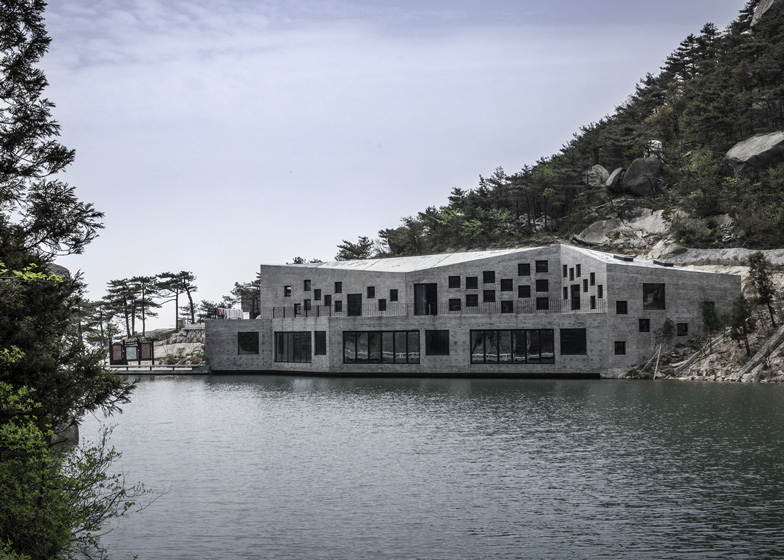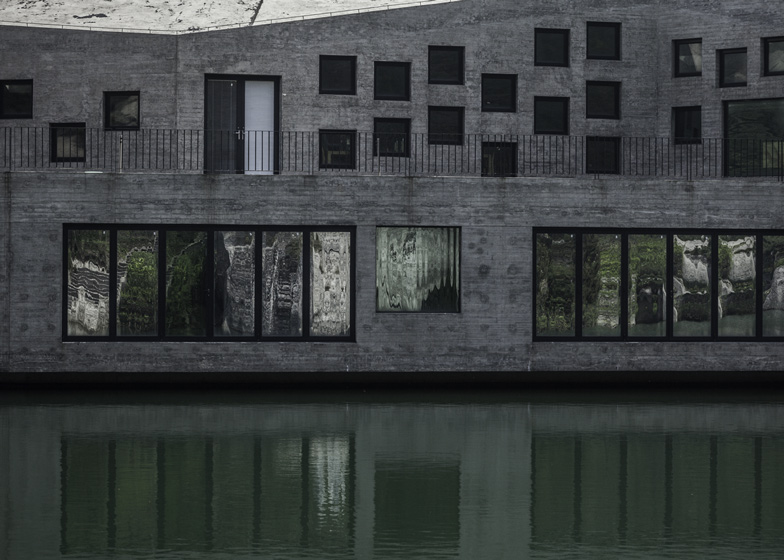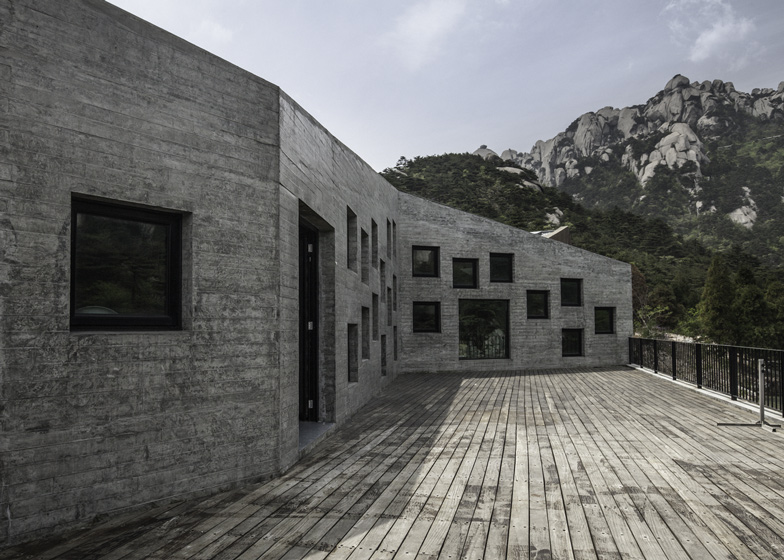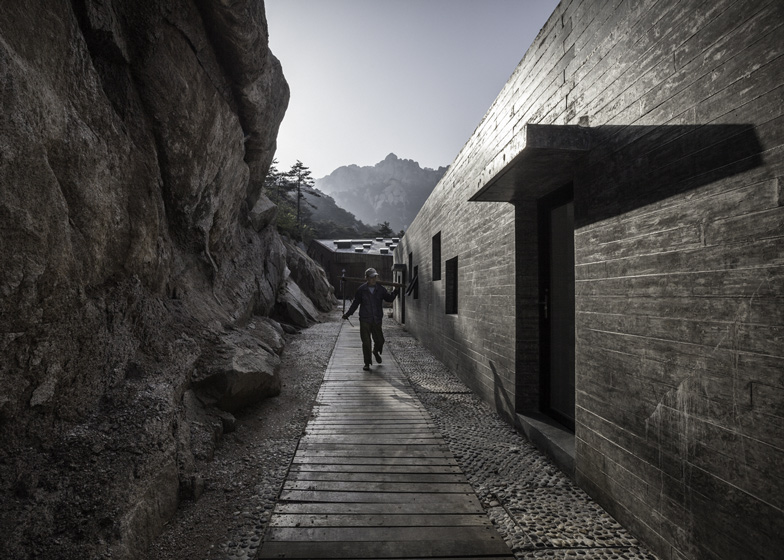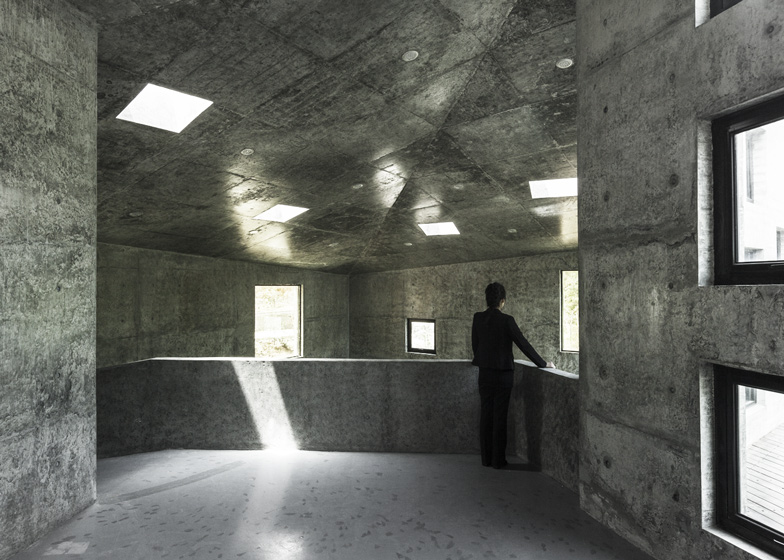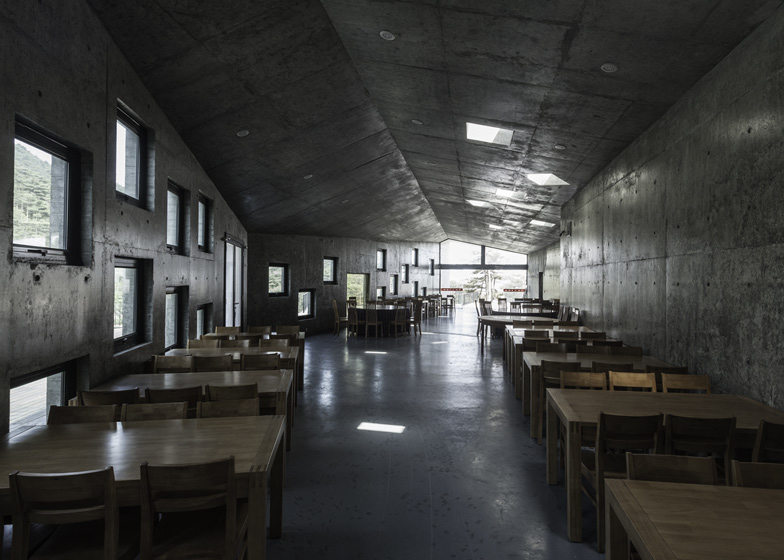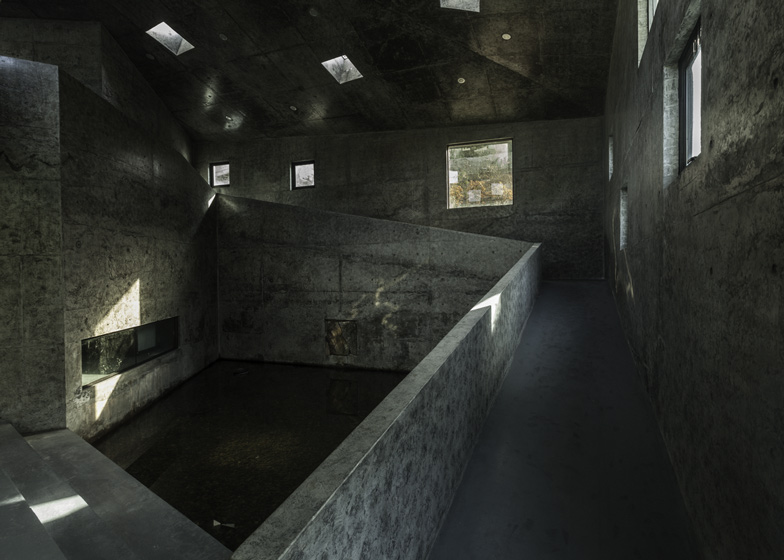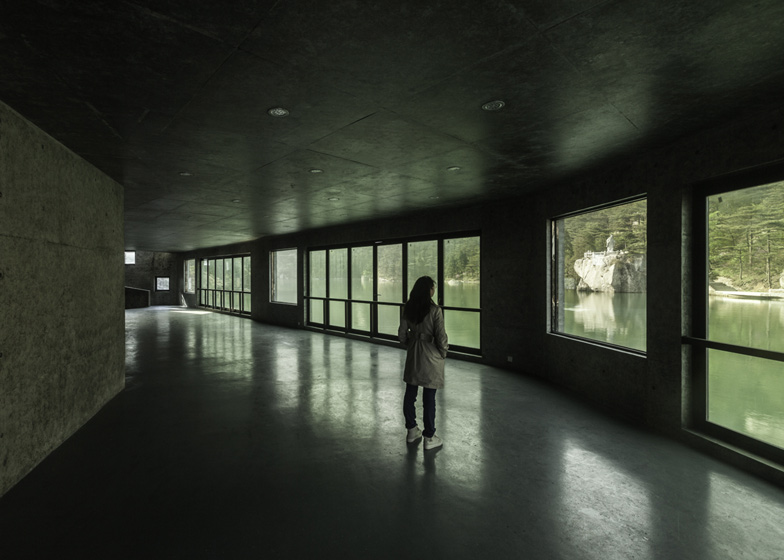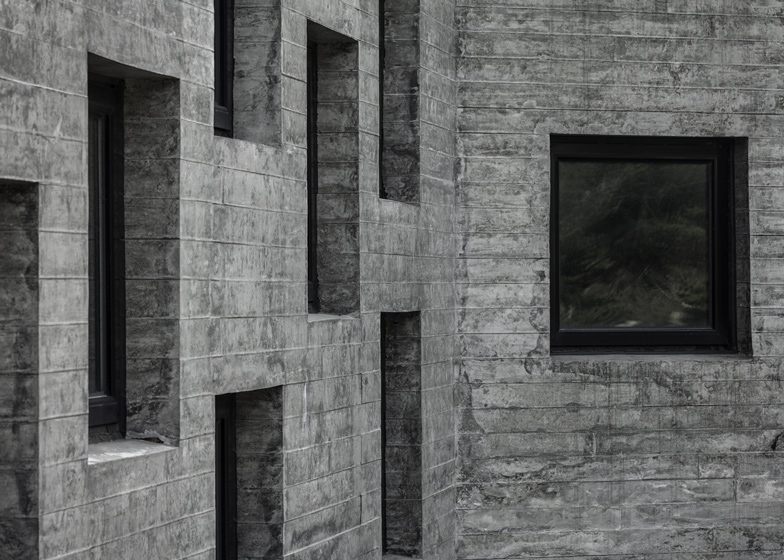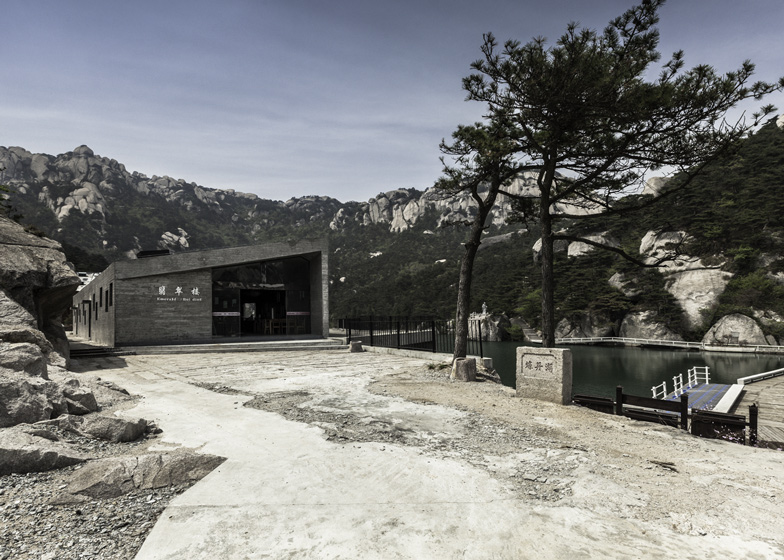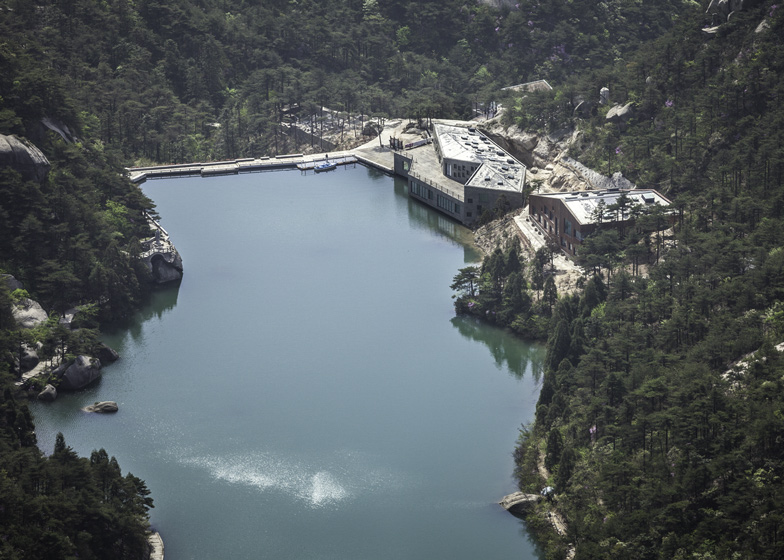The folded concrete walls of this lakeside visitor centre in China's Anhui Province were designed by architects Archiplein to mimic the uneven surfaces of the surrounding mountains (+ slideshow).
The two-storey building sits at the base of Jiǔhuá Shān, one of the five Sacred Mountains of China, and provides a restaurant and rest stop for the many pilgrims that visit the landmark each year.
Architects Feng Yang, Leroux Marlène and Jacquier Francis of Archiplein wanted to design a building that merges with the landscape, like in traditional Chinese landscape paintings.
"In this kind of painting, the building and the nature are not two separated systems stuck together; they are represented as an integrated whole where the architecture is not the main focusing point of the composition," they explained.
The building is constructed from concrete, which was formed against wooden boards to give a rough texture to the exterior surfaces.
The walls zigzag in and out on both levels, creating a series of facets along the lakeside facade.
"The strategy is to consider the building as the continuity of the existing topography so as to reduce its impact on the land," said the architects. "The building is bended by following the natural movement and defines a set of different faces that minimises its size."
Dozens of square windows are scattered across the elevations and matching skylights dot the rooftops.
An internal ramp connects the two floors inside the building, which both contain large dining areas filled with tables and chairs.
The architects have also added a shallow pool of water with steps leading down to its surface.
Photography is by Frédéric Henriques.
Here's a project description from Archiplein:
Tianzhoushan Tea House
The project is located in Anhui province, in one of the five sacred Taoist mountains of China.
To define the new relation between this building and the surrounding nature, the project has been inspired by the typical Chinese painting.
In this kind of painting, the building and the nature are not two separated systems stuck together, they are represented as an integrated whole where the architecture is not the main focusing point of the composition.
It reproduces in a way the natural form and follows the general movement of the landscape.
For this specific situation we develop this philosophy of vanishing. The strategy is to consider the building as the continuity of the existing topography so as to reduce its impact on the land.
The building is bended by following the natural movement and defines as set of different faces that minimises its size.
Status: realised
Type: architecture, touristic infrastructure
Data: 2009-2012, 1000 m², 3M €
Location: Anhui, China
Team: Feng, Jacquier, Leroux

